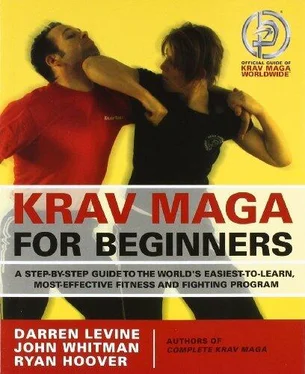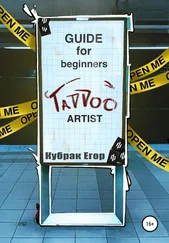1Keeping your neck stiff and your jaw tightly closed, drive your head forward using your legs and upper body. The striking surface is the top of your forehead, right at the hair line. The target should be the attacker’s nose, cheekbone, etc.
Training Tips:It’s not necessary to grab the face or head. A powerful (and sneaky) headbutt can be delivered without the grab. If you do grab, be careful not to pull the attacker’s chin downward. This hides his face and exposes the hard skull, which will damage you. We have seen people knock themselves out giving headbutts this way.
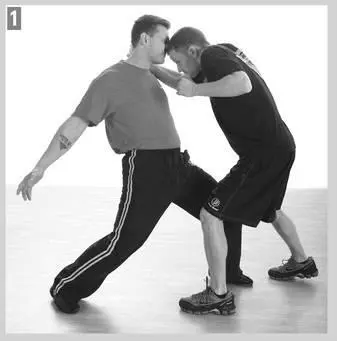
Just like elbows, hammerfist punches can be delivered at almost any angle with power. When training hammerfist punches, you may want to use a neutral stance so that you can focus on turning your hips for power. The striking surface for all hammerfist punches is the pinky side of the fist, also called the “meat” part of the fist. While a regular punch runs some risk of injury to the knuckles, the hammerfist strike is very safe. Hammerfist punches are most effective to the face or back of the neck.
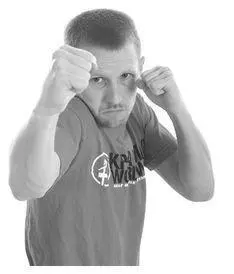
Hammerfist to the side may be practiced from a fighting stance or a neutral stance. Because it’s often used in reaction to a surprise attack, we generally present the strike from a passive stance first.
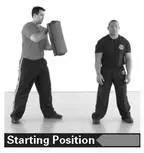
Starting Position:Passive stance.
1Move your right hand sideways and upward, elbow slightly bent. As your hand moves toward its target, rotate your hip and shoulder. Tuck your chin. Your rising arm should cover you as well as strike. Pivot your outside foot and step in toward your target to make sure weight is being transferred into the punch.
2On contact, your elbow should still be somewhat bent. The bent elbow should pass your target to help the punch penetrate; it also helps prevent hyperextension of the joint.
Recoil and return to starting position.
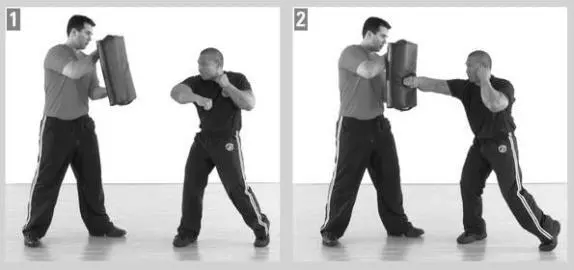
Hammerfist to the back is essentially the same as hammerfist to the side, but with a greater turn to meet an attack coming from behind. You should practice it to develop the concept that you can strike in a full circle around your body.

Starting Position:Passive stance.
1Look over your right shoulder, but keep your chin tucked. Move your right hand sideways and upward, elbow slightly bent. As your hand moves toward its target, rotate your hip and shoulder. Your rising arm should cover you as well as strike. Pivot your outside foot and step in toward your target to make sure weight is being transferred into the punch.
2On contact, your elbow should still be somewhat bent. The bent elbow should pass your target to help the punch penetrate; it also helps prevent hyperextension of the joint.
Recoil and return to starting position.
Training Tips:Make sure the movement on hammerfist to the back covers your face. It’s not a defensive movement—it’s an attack!—but it should offeryou it’s an attack!—but it should offer you some coverage in case the opponent’s attack reaches you first.
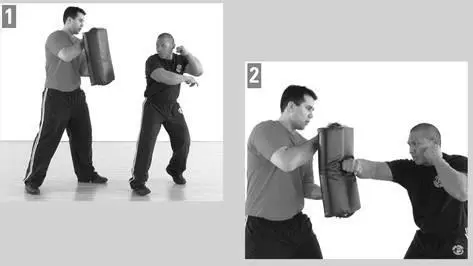
A forward hammerfist is generally a strike to your opponent’s face.

Starting Position:Passive stance.
1Raise your right hand in a small windup—roughly from chin height to about eyebrow height. Don’t throw your hand too high above your head—that motion would be too slow and detectable.
2As your fist comes down, gener ate power by rotating your shoulder and hip inward and forward while driving with your legs.
Recoil and return to starting position.
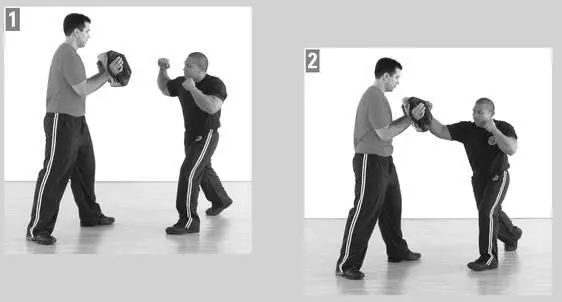
A downward hammerfist will generally be to the back of your opponent’s neck, at the base of the skull with your opponent doubled over (for example, after a groin kick). Other targets may be the kidneys (against a low bearhug) or face.
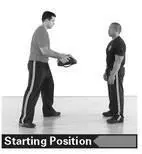
Starting Position:Passive stance.
1Raise your right fist upward in a small windup.
2As your punch descends, gener ate power by rotating your hip and shoulder inward and down, and by bending your knees. Do not bend at the waist.
Recoil and return to starting position.
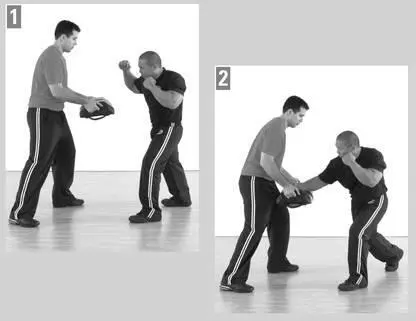
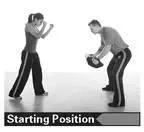
Fighting Stance
Starting Position:Left-leg-forward fighting stance.
1Swing your right leg forward, bending your knee.
2As your hip comes forward and upward, snap your foot out, driving through the target. Pivot slightly on your left (base) foot—this opens your hips, which helps extend the kick and add power. The striking surface can either be your instep, about where you tie your shoelaces, or your shin.
Recoil. After making contact, you should be able to either put the kicking foot down in front of you or bring it back into a fighting stance.
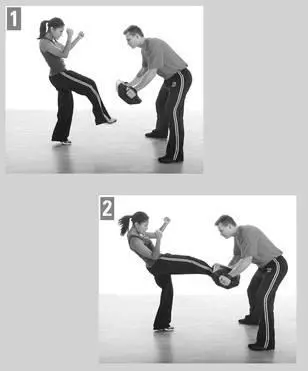
Training Tips:The comment about pivoting slightly with your base foot is very important, especially if you aren’t very flexible. To gain power in the kick, your hips must open forward. For those of us who are less flexible, the slight pivot of the base foot will give your hips room to open. Also, as stated, you can strike with either the instep or the shin. The shin is much stronger, but the instep can be useful when the target is a little farther away.
If you were to kick from a neutral stance, there is no real difference as far as the kicking leg is concerned. However, because your body is not ready to deliver a kick, you may add the following training tip: To gain power from a neutral stance, shift your weight suddenly and explosively to the base foot and send your kicking leg sharply toward the target. If you make the motion too slow (i.e., “shift 1, kick 2”), you will telegraph the kick. The weight shift and kick should happen simultaneously. Also, emphasize speed and penetration over power. Although we always want to deliver a strong strike, even a lighter groin kick can do damage as long as it hits the target!
Читать дальше
